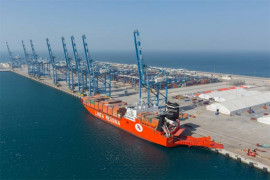
However, given complex cultural and institutional dynamics at play in Pakistan, the conditions needed for this prediction to be realised are not present.
Monetary policy: SBP cuts policy rate by 25 basis points
Under the general inverse curve, where flow of money and interest rate are bounded in the opposite axis, any increase in policy rate would take the money flow down. Conversely, decrease in the policy rate would increase the money flow. Higher flow of money is associated with inflation, so quite directly it is assumed that there are inflationary pressures linked to the decision on cut in the policy rate.
Does the increase in the flow of money, contrary to popular perception, mean that the State Bank of Pakistan (SBP) starts printing more notes than it normally does, arbitrarily. When interest rate goes down, more people will take out loans (since debt financing gets cheaper) and consequently the banks, finding their own coffers empty, would seek loans from SBP.
Now this indeed means that policy rate enjoys an inverse relationship with money flow, and possibly inflation (Ceteris Paribus).
However, for Pakistan, where government owes a domestic debt of Rs13 trillion, and private players cannot possibly offer the same collateral as government’s sovereignty, a big chunk of natural private rival is crowded out of the debt market.
According to SBP’s documents, as on April 30, 2016, of the Rs7.6 trillion government securities taken into account, 79.3% was held by scheduled banks.
Banking spread clocks up at 5.16% in Jan-May
So much so are the bank’s margins entirely dependent on financing government’s debt that the announcement of lower policy rate was followed by a sharp dip in share prices of these banks in the days that followed.
Another SBP document titled “Credit/loans classified by borrowers” shows that of the Rs12.4 trillion credit, Rs7.6 trillion is swallowed up by the government sector.
Neglected regions
The problem gets infuriatingly worse when one considers neglected regions like K-P where higher advances or lower interest rate almost never translate into greater credit for the private sector, as it should since credit got cheaper for the banks. These are, in the words of SBP Governor Ashraf Wathra, red zone areas where banks don’t give out loans to private players.
This aversion to give out loans to private and risky investors (traders) who are perceived to be less sophisticated and associated with a higher risk of default means that bankers take pride in not indulging the private players at all as far as debt market is concerned. “They boast that they don’t have to deal with such people.”
This attitude to avoid private, riskier investments by professional bankers means that smaller businessmen have to settle for far more expensive loans from private entrepreneurs. This means that banks, instead of building better ties with the community it is located in to understand whom to dole out loans to, choose to simply build up its reserves in terms of bank deposits and use these reserves to finance secure government debt.
Banking spread shrinks in Jan-Mar quarter
This exploitative relationship, where professional bankers inside the air conditioned buildings wearing suit and ties prefer not to be bothered by ordinary businessmen clad in Shalwar Kameez, takes on a more convoluted dimension.
This would be best understood in the words of an SBP employee, speaking on condition of anonymity, “The ordinary man in Peshawar or Quetta does not think that the banker is one of them…talks of financial inclusion are so off the mark one does not know where to begin.”
Not a simple relationship
So there are a couple of big factors to take into consideration. Firstly, the banks are unlikely to dole out any more loans given cultural aversion to dealing with businessmen. Secondly, ordinary businessmen won’t just jump out to get more loans given cheap credit. Thirdly, government’s decision to roll over its debt or take on further debt depends entirely on budget priorities, not the interest rate.
Taking these factors into our analysis, it can be seen that policy rate, unlike conventional wisdom, does not always have such a simple relationship with money flow and consequently with inflation. Where the effects of policy rate are painfully obvious are on the bank’s profit and loss account, which can hardly garner a common man’s sympathy, so efforts are redirected to inflation.
To sum it up, policy rate is inversely proportional to money flow, but if local caveats are taken into consideration, inflationary pressures either cease in effect or are highly diluted. Given these considerations, the only tangible outcome would be lower debt servicing cost for the government, given the banks agree to budge (unlike on May 18 when they demanded higher returns for PIBs, following which all of the bids were rejected by SBP).
The writer is a staff correspondent
Published in The Express Tribune, June 27th, 2016.
Like Business on Facebook, follow @TribuneBiz on Twitter to stay informed and join in the conversation.























COMMENTS
Comments are moderated and generally will be posted if they are on-topic and not abusive.
For more information, please see our Comments FAQ